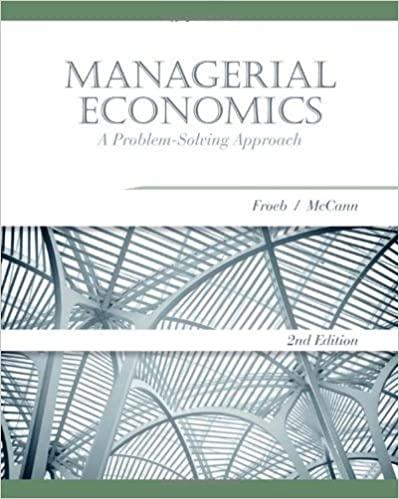Question
CASE STUDY Cutting Taxes to Stimulate the Economy When John E Kennedy became president of the United States in 1961, he brought to Washington some
CASE STUDY
Cutting Taxes to Stimulate the Economy When John E Kennedy became president of the United States in 1961, he brought to Washington some of the brightest young economists of the day to work on his Council of Economic Advisers. These economists, who had been schooled in the economics of Keynes, brought Keynesian ideas to discussions of economic policy at the highest level. One of the council's first proposals was to expand national income by reduc-ing taxes. This eventually led to a substantial cut in personal and corporate in-come taxes in 1964. The tax cut was intended to stimulate expenditure on consumption and investment and thus lead to higher levels of income and em-ployment. When a reporter asked Kennedy why he advocated a tax cut, Kennedy replied, "To stimulate the economy. Don't you remember your Economics 101?" As Kennedy's economic advisers predicted, the passage of the tax cut was fol-lowed by an economic boom. Growth in real GDP was 5.3 percent in 1964 and 6.0 percent in 1965.The unemployment rate fell from 5.7 percent in 1963 to 5.2 percent in 1964 and then to 4.5 percent in 1965.5 Economists continue to debate the source of this rapid growth in the early 1960s. A group called supply-siders argues that the economic boom resulted from the incentive effects of the cut in income tax rates. According to supply-siders, when workers are allowed to keep a higher fraction of their earnings, they supply substantially more labor and expand the aggregate supply of goods and services. Keynesians, however, emphasize the impact of tax cuts on aggregate demand. Most likely, both views have some truth: Tax cuts stintstate aggregate supply by im-proving workers' incentives and expand avregate demand by raising households' dispos-able income. When George W. Bush was elected president in 2001, a major element of his platform was a cut in income taxes. Bush and his advisers used both supply-side and Keynesian rhetoric to make the case for their policy. During the campaign, when the economy was doing fine, they argued that lower marginal tax rates would improve work incentives. But then the economy started to slow: unem-ployment rose from 3.9 percent in October 2000 to 4.5 percent in April 2001. The argument shifted to emphasize that the tax cut would stimulate spending and reduce the risk of recession. Congress passed the tax cut in May 2001. Compared to the original Bush proposal, the bill cut tax rates less in the long run. But it added an immediate tax rebate of $600 per family ($300 for single taxpayers) that was mailed out in the summer of 2001. Consistent with Keynesian theory, the goal of the rebate was to provide an immediate stimulus to aggregate demand.
QUESTIONS:-
a. What is the issue in the article?
b. Why the policy is found to be consistent with Keynesian theory?
Step by Step Solution
There are 3 Steps involved in it
Step: 1

Get Instant Access to Expert-Tailored Solutions
See step-by-step solutions with expert insights and AI powered tools for academic success
Step: 2

Step: 3

Ace Your Homework with AI
Get the answers you need in no time with our AI-driven, step-by-step assistance
Get Started


